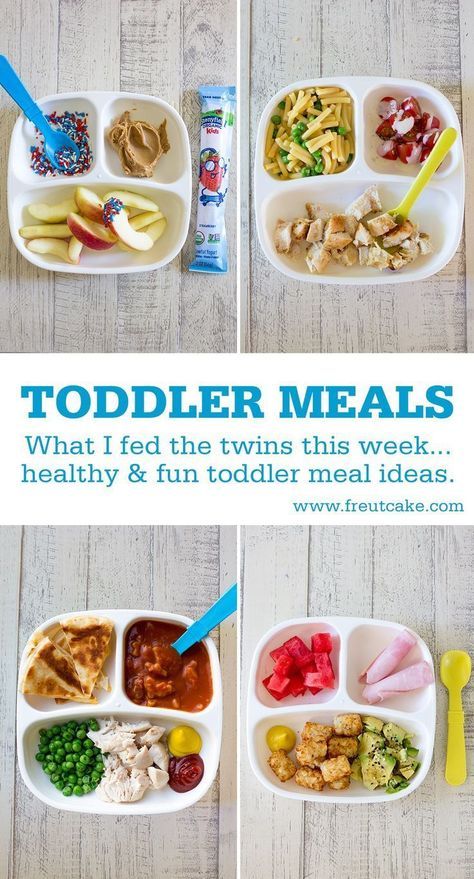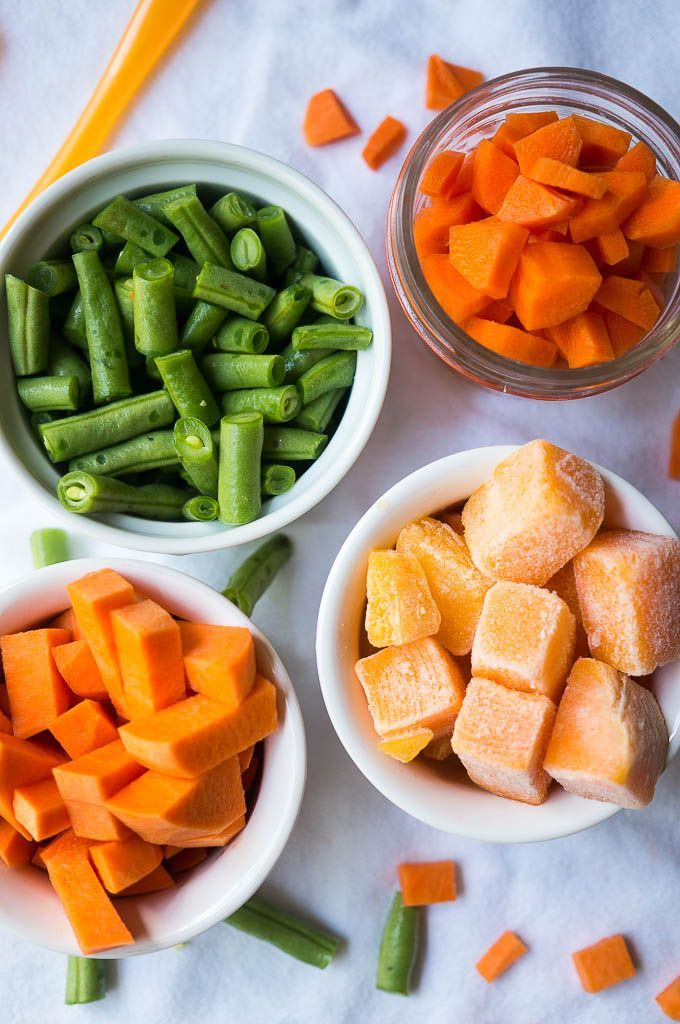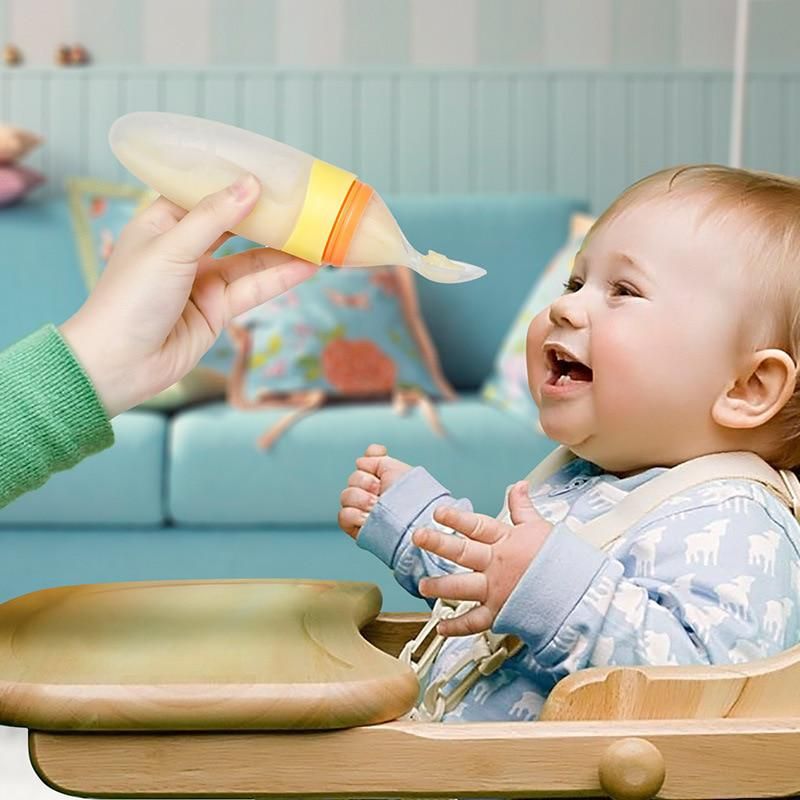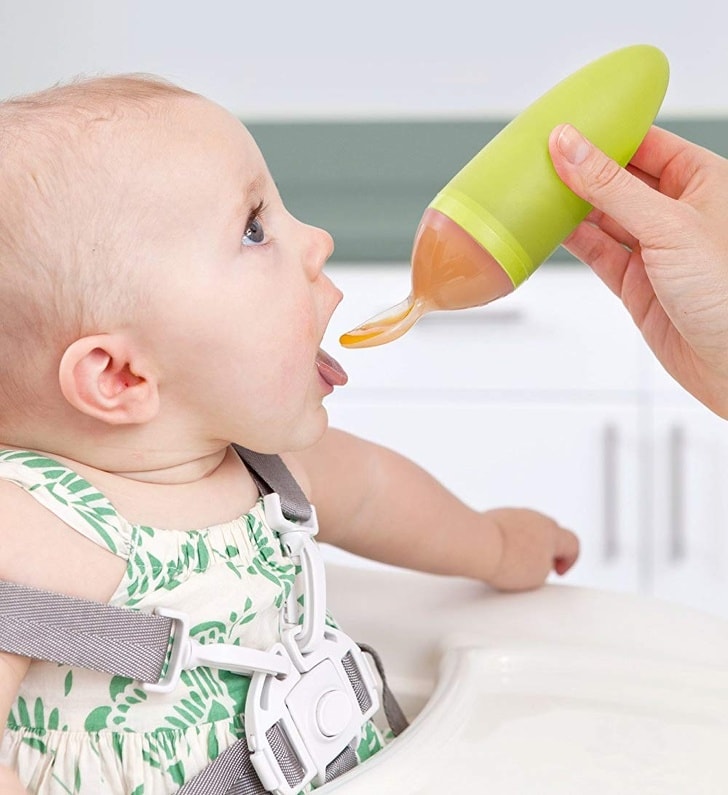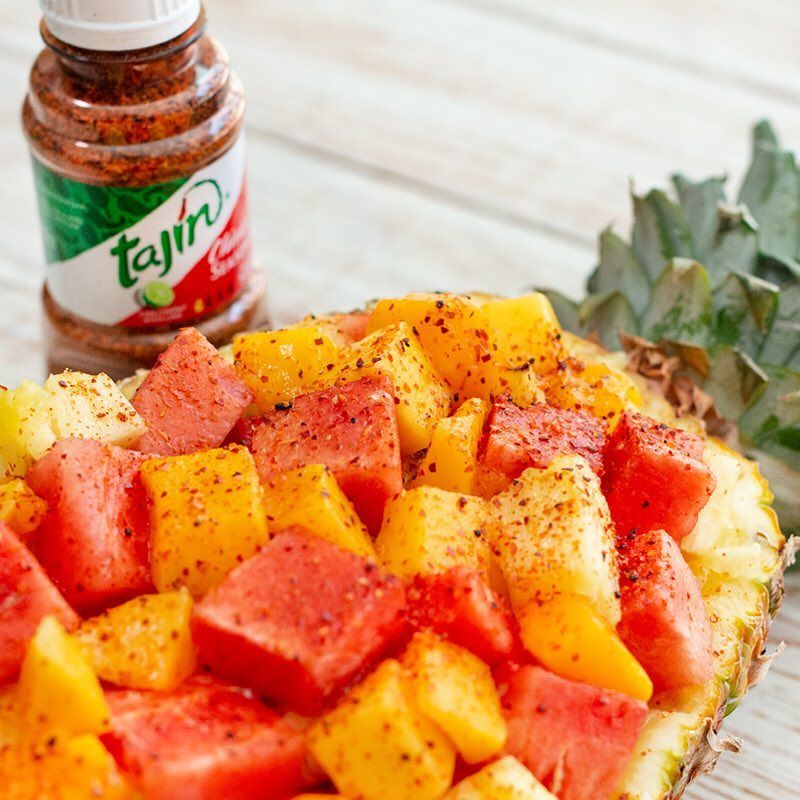17Th month baby food chart
17 Months Old Baby Food Ideas Along with Recipes
Feeding a toddler is not an easy job. By the time your toddler turns 17 months, he will throw a lot of tantrums and feeding him will become a challenge for you. If you constantly wonder what to feed to your 17-month-old toddler, then worry no more. You are not alone in this. All new moms face this situation in life as their babies grow. Taking care of a toddler is not an easy task but slowly you will learn to take care of him. Meanwhile, here are a few tricks and interesting recipes that can turn the tables in your favour and maintain your toddler’s health at optimal levels.
Video: Food Ideas For 17 Month Old Baby
Nutrient Requirements of a 17 Months Old Child
While putting together some great breakfast ideas, parents should remember that the nutritional requirements of their 17-month-old child should be met appropriately. Here is what your child requires at the age of 17 months.
- Carbohydrates
Carbohydrates make it possible for the little one to carry out all the activities of a day. Apart from giving energy, carbohydrates also promote brain development in toddlers. A toddler should consume around 135 grams of carbohydrates daily.
- Proteins
Proteins are another essential requirements for a baby. For toddlers, who eat only veg food may not get enough protein. Hence, you need to make sure that your child’s protein intake is not compromised.
- Iron
Once the baby is weaned, his iron consumption may be affected. When a baby is breastfed, he gets enough iron from the breastmilk but later it may be compromised and as a result, it can affect the growth of the baby. Hence, when a baby is 17 months old or above, you should include iron-rich foods in his diet. Around 7mg of iron intake is necessary at this age.
- Sodium
Sodium is rarely considered essential, primarily because most of our salts and other food items do contain sodium in the required quantities. Families that follow a very unique dietary pattern do need to ensure the presence of sodium in their meal choices.
- Calories
The appetite of your child might not be as high as before, but that also poses a risk of them not getting enough calories required to stay active in the day. Maintaining a range of 1000 to 1400 calories on a daily basis is a great way to keep them healthy.
- Dietary fibre
Most parents wonder which food items or vegetables can provide the required amount of fibre to a child. While there are numerous whole wheat food items, choosing some simple fruits that are fibrous in nature can be an easy way to keep your diet balanced.
- Water
You may fail to keep a track of your toddler’s water intake as he runs around the house. But, you must not take it lightly. Make sure that your child drinks enough water during the day.
But, you must not take it lightly. Make sure that your child drinks enough water during the day.
How Much Food Does a Toddler Need at 17th Month?
The food requirements of a kid vary according to size, weight, metabolism, and many other factors. Some kids may be more active than others and may need more food. However, in general, they may need around 1-1.2 kilocalories on a daily basis.
Best Foods for a Seventeen-month-old Baby
Whether you are putting together some kickass lunch ideas for your toddler the following food products have been known to satisfy substantial nutritional requirements of kids.
1. Eggs
Eggs are the best multipurpose option you can go with at any time of the day. The perfect balance of protein and low cholesterol makes it great for the entire family itself.
2. Milk
The inclusion of milk in a young kid’s life is irreplaceable, be it breastmilk or full-cream milk from the dairy. If your child is lactose intolerant, you can opt for soy milk as an alternative. Ensure that it is fortified with all the necessary nutrients your kid needs.
Ensure that it is fortified with all the necessary nutrients your kid needs.
3. Other Dairy Products
While milk is essential for a child’s development, other products derived from it are just as important. Yoghurt provides probiotics, cheese provides protein, and butter just makes everything tastier than it already is. So, include dairy products in your baby’s daily diet.
4. Seafood
Most parents may not consider seafood as a safe food choice for a 17-month-old baby and they are not wrong. Fish such as shellfish and swordfish should be strictly avoided. Consuming safe fish can provide tons of additional elements like DHA and omega-3 acids to a baby in a healthy proportion.
5. Meat
Avoid giving heavy meat items such as turkey, steak, or mutton to a baby. Instead, stick to poultry items as that meat is easy-to-digest and provides good proteins to the child. Grilled meat that is fresh and organic remains the healthiest choice in this matter.
6.
 Nuts
NutsWhile nuts are extremely beneficial for kids, it is essential to check your little one for the presence of any allergy before starting him off with them. If your child has no allergy, you can give him some chopped almonds or walnuts regularly with his meals.
7. Fruits
Choosing fresh and organic fruits over any commercially available juices is always the right decision. Citrus fruits can provide numerous vitamins that a child needs, while some fruits like avocado can provide a good proportion of healthy fat in a single serving.
8. Vegetables
Almost all vegetables are safe to consume for a toddler at this age. If your kid is throwing tantrums and refusing to eat vegetables, get a little creative. You can chop and steam the vegetables and then serve. You can also give vegetables in the form of curry.
9. Grains
Quinoa is quite an interesting choice that should definitely be tried out since it is rich in proteins and iron. Similarly, millets and rice should be included regularly in a child’s diet.
10. Oil
Although oil is not specifically a food item, it is necessary to prepare the meals in healthy oils to ensure that your baby gets enough fats and nutrients from it. While preparing any snacks, use olive oil.
Video: Diet Plan for a 17-Month-Old Baby
17 Month Old Baby Food Chart/Meal Plan
The meal plan mentioned below for a 17-month-old toddler will prove useful if you want to give different foods to your child every other day.
Diet for a 17-month-old – Week 1, Day 1
Diet for a 17-month-old – Week 1, Day 2
Diet for a 17-month-old – Week 1, Day 3
Diet for a 17-month-old – Week 1, Day 4
Diet for a 17-month-old – Week 1, Day 5
Diet for a 17-month-old – Week 1, Day 6
Diet for a 17-month-old – Week 1, Day 7
Diet for a 17-month-old – Week 2, Day 1
Diet for a 17-month-old – Week 2, Day 2
Diet for a 17-month-old – Week 2, Day 3
Diet for a 17-month-old – Week 2, Day 4
| Breakfast | Rajgira (amaranth)-wheat sheera with mashed raisins for sweetness |
| Mid-morning | Any melon |
| Lunch | Roti + dal + a sabzi of choice + a few slices of cucumber + hand pounded rice |
| Evening | Phirni |
| Dinner | Shahi paneer with paratha and tomato- mushroom soup |
Diet for a 17-month-old – Week 2, Day 5
Diet for a 17-month-old – Week 2, Day 6
Diet for a 17-month-old – Week 2, Day 7
Diet for a 17-month-old – Week 3, Day 1
Diet for a 17-month-old – Week 3, Day 2
Diet for a 17-month-old – Week 3, Day 3
Diet for a 17-month-old – Week 3, Day 4
Diet for a 17-month-old – Week 3, Day 5
Diet for a 17-month-old – Week 3, Day 6
Diet for a 17-month-old – Week 3, Day 7
Diet for a 17-month-old – Week 4, Day 1
Diet for a 17-month-old – Week 4, Day 2
Diet for a 17-month-old – Week 4, Day 3
Diet for a 17-month-old – Week 4, Day 4
Diet for a 17-month-old – Week 4, Day 5
Diet for a 17-month-old – Week 4, Day 6
Diet for a 17-month-old – Week 4, Day 7
Video: 17 Month Old Baby Food Recipes
Food Recipes For 17 Months Old Baby
While dinner ideas amongst many other meal options might be easy to come up with, snacks can get quite tricky and repetitive after a few weeks. Here are a few interesting snacks recipes that you can try for your toddler.
1. Toast with Avocado
Fats are essential for kids and including avocado in his diet through this recipe can make sure he gets the right amount of it. So, try this tasty recipe for your baby.
Ingredients
- Salt
- Pepper
- Cheese
- Whole wheat bread
- Banana
- Avocado
How To Prepare
- Take an avocado and separate the seed. Mash the fruit properly in a bowl so that it forms a creamy paste.
- Add some salt and pepper to it to enhance the flavour.

- Toast the slices of bread and arrange them on a plate. Spread the avocado mashed mix on the slices. Add banana pieces over it and shred some cheese on top.
2. Banana Oatmeal
Breakfast time is the perfect time to ensure that a child gets the most of nutrients. This recipe can provide enough fibre and vitamins in a single go, as well as keep your child satisfied for a long duration.
Ingredients
- Cinnamon
- Bananas, chopped
- Almond milk
- Water
- Oats
How To Prepare
- Cook oats in a pan. Make use of water or even almond milk as a base for it. Stir the oats intermittently so that they are cooked properly.
- Once the oats are softened, add cinnamon powder to enhance its taste.
- Turn off the flame and let it cool.
- Transfer it to a bowl and mix some banana pieces in it and the dish is ready!
3. Mediterranean Salad
A toddler may not show much interest in eating salad but if you garnish it with cheese, he sure will eat it.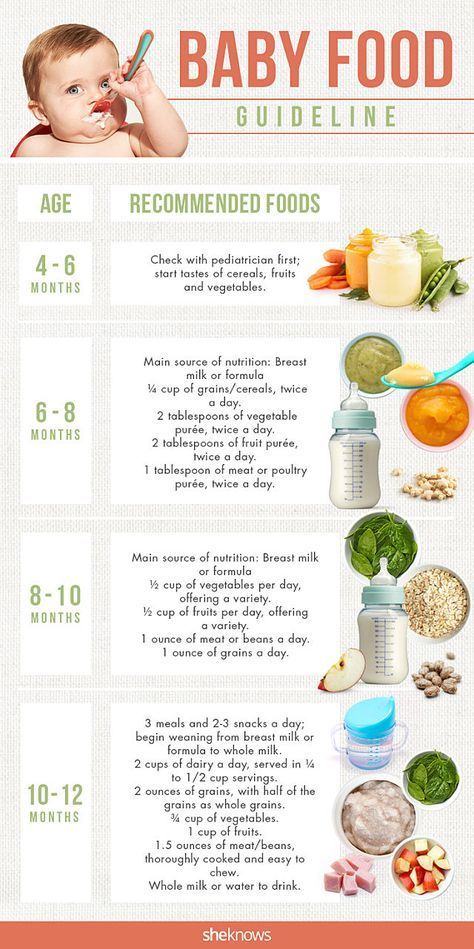 Try this salad recipe for your baby.
Try this salad recipe for your baby.
Ingredients
- Cheese
- Black pepper
- Salt
- Coriander
- Black olives
- Tomato
- Bell pepper
- Onion
- Vinegar
- Olive oil
- Quinoa, cooked
How To Prepare
- Dice the vegetables in small pieces and put them in a bowl.
- Take a pan and add olive oil to it. Put onions, bell pepper, tomatoes, and coriander and sauté them.
- Add these vegetables with cooked quinoa in a large bowl and garnish with cheese.
4. Tasty Risotto
When looking for a dish that is light on flavour and heavy on nutrition, go with this choice.
Ingredients
- Cheese
- Lemon juice
- Butter
- Frozen peas
- Carrots
- Vegetable stock
- Rice
- Olive oil
- Spring onion
How To Prepare
- In a pan, add butter and spring onions, and saute them until they soften.
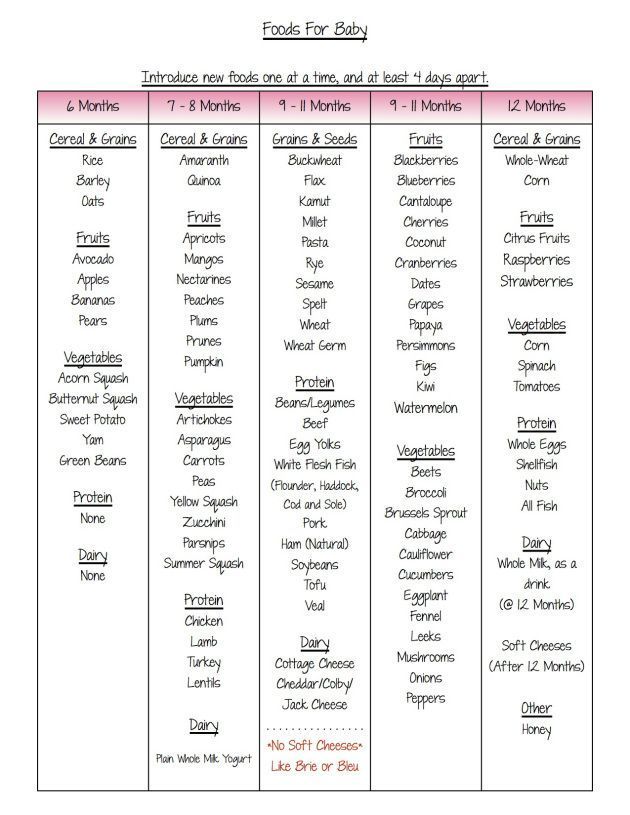
- Add peas and rice and cook it well. Follow up with the vegetable stock, and stir it until it is absorbed fully. Add more stock thereafter till the rice softens. Cover the pan with a lid.
- Once the rice is cooked, grate cheese over it and serve fresh.
5. Pumpkin Dip
Not only will this add great flavour to your snack, but it is a great source of vitamin A as well.
Ingredients
- Lemon
- Pepper
- Salt
- Pumpkin, canned
How To Prepare
- Make pumpkin puree and add pepper, salt to it.
- You can also add a few drops of lemon.
- Serve with digestive cookies or even various fruits.
Feeding Tips
Feeding your toddler won’t be a difficult task anymore if you keep the following tips in mind.
- Let your child handle plastic cutlery by himself.
- Allow judicious meal times for your kid to eat calmly.
- Focus on trying out variety instead of finishing the food.

- Keep the diet balanced at all times.
- Talk to your doctor before introducing a new item.
- Make sure your kid drinks water after a meal.
- Use colourful bowls to make the food look appealing.
- Cut fruits and foods into tiny pieces when giving it to your baby.
- Don’t let your kid eat without your supervision.
- Don’t scold your kid if he spits out any food he doesn’t like.
Meals always constitute a larger portion of your child’s food but snacks for 17-month-old baby are what tend to do the trick many times. Offering a variety can help your kid warm up to food items he hated earlier and you never know he may start eating them.
Disclaimer:
- Each child is different and so use these meal plans as a trusted guide as per your discretion. You can modify the meals according to your child’s preferences / requirements.
- Never force-feed a child.
- While preparing formula, please follow the instructions on the box and use the measuring spoon provided with it.

- While introducing solid food to a baby, initially, one needs to prepare watery gruels/soups. As a child gets older, the caretaker/ mother has to increase the thickness of the liquids slowly according to the child’s capacity to swallow. Foods that are too thick can cause stomach upset/ unnecessary load; while excessively watery food might cause the child to remain hungry.
- Some kids may eat less on some days and that is absolutely alright. However, if a child eats less for more than 3-4 consecutive days, please visit a doctor to guide further.
- A child may eat less during the teething phase or if he/she may not be feeling well. You could increase breast milk /formula feeds on those days. Re-introduce the foods once the child is back to normal.
- Don’t stop feeding if the child is suffering from diarrhoea.
- You can alter the taste of the food by adding some natural flavours like cinnamon, jeera powder, lemon juice, curry leaves etc. if the child doesn’t accept the food initially.

- If your child suffers from an allergy to nuts, gluten or eggs, please consult your doctor before feeding him/her any foods that may contain them.
Also Read: 5 Indian Winter Foods for Babies with Recipes
17 to 20 Months Old Baby Food Chart Along With Recipes
Getting children to eat healthy food is not an easy task. If you have a child, you know taking care of him is a lot of work. From making sure that you provide him with the best nutrition to ensuring that he meets his milestones on time – as a parent you have a lot to stress about. One important task is deciding meals for your little one. You will need to work nutritious foods in his diet from early on for his healthy growth and development, and to develop healthy eating habits in him. If you want to know which foods you should include in your baby’s diet, read on!
The Best Foods for 17-to-20-month-old Babies
If your baby is between 17 and 20 months old, he must be growing at a rapid rate. He will need the right kind of nutrition for his proper growth. A well-balanced diet that is rich in proteins, vitamins, carbohydrates, minerals is important for him. If you want to know which foods you should include in your child’s diet, read on!
He will need the right kind of nutrition for his proper growth. A well-balanced diet that is rich in proteins, vitamins, carbohydrates, minerals is important for him. If you want to know which foods you should include in your child’s diet, read on!
1. Grains
Grains are super-healthy and can be included in your baby’s diet. You can add different grains like rice, millet, barley, etc., in his diet. Rice is the least allergenic grains and that is why it is recommended as one of the first foods for babies. Millets are a rich source of B vitamins, magnesium, and iron, and barley can provide your munchkin with Vitamin A, folate, and protein. You can also include quinoa in his diet as it is rich in iron, calcium, fibre, and protein. However, before including these grains, do check with your baby’s paediatrician first.
2. Vegetables
Now that your baby is a little older, you can introduce veggies to him. Veggies like pumpkins and carrots are a great source of Vitamin A, so include these in his diet. Apart from these, you can also give him boiled peas, edamame beans, and cucumber.
Apart from these, you can also give him boiled peas, edamame beans, and cucumber.
3. Fruits
You can include citrus fruits such as oranges and sweet lime and other fruits like apples, bananas, berries, and pears. If avocados are easily available in your area, make them a part of your child’s diet too. Avocados are a great source of healthy fats and are a must-include in a growing child’s diet.
4. Nuts
Dried fruits and nuts can help your child gain healthy weight. You can start off by giving your toddler small pieces of almonds and walnuts (nicely chopped) either in a meal or on the side. These nuts should be chopped well as your little one might end up choking on them. You can also powder them and add it to his glass of milk.
5. Milk
If your little one is above 12 months of age, include a glass of milk in his daily diet. But if your child is lactose intolerant, consult a paediatrician with regards to the inclusion of milk in his diet.
6. Other Dairy Products
Cheese, clarified butter, butter, cottage cheese, and yoghurt can also be given as a snack to toddlers. You can also include these in his meals. Dairy products are a rich source of calcium and protein and will keep your child full.
You can also include these in his meals. Dairy products are a rich source of calcium and protein and will keep your child full.
7. Eggs
Eggs are a versatile food and can be included in a child’s diet, but it’s best to start them after your child turns two years of age. Boiled eggs, scrambled eggs, omelette would make for a great breakfast option. Eggs are high in protein, low in cholesterol, and good for overall health. So make them a part of your baby’s diet.
Foods That Should Not Be a Part of Your Toddler’s Diet
Given below are the two common foods that should not go into your child’s daily diet if he is between 17 and 20 months old.
1. Meat
While meat is a good source of protein and extremely nutritious, it should not be a part of a toddler’s diet. Why? The animal proteins are allergenic in nature and should be avoided in the initial two years of life.
2. Fish
Fish is also healthy but some kinds of fish may affect your child’s health negatively, so it is best avoided.
A Sample Food Chart/Meal Plan for 17-to-20-month-old Babies
Preparing meals for your baby won’t be difficult if you have a meal plan at your disposal. Given below is a sample food chart for babies between the ages of 17 and 20 months. You can use this sample meal plan as a guide and give it your own twist. Check out the plan below –
| Day | Breakfast | Mid-Day Snack | Lunch | Evening Snack | Dinner |
| Monday | 1 ragi dosa + a small glass of milk | 2/3 slices of apple | 1 cup lemon rice + sambar | Porridge with honey and cinnamon | 1/2 cup of tomato soup +1/2 cup of whole wheat pasta |
| Tuesday | 1 cup of oatmeal with banana slices | ½ cup of watermelon | 1/2 cup of rice + 1/2 chole + 1-2 slices of carrot and cucumber | 1/2 cup fruit yoghurt | 1 roti +1/4 cup of palak paneer |
| Wednesday | 1 small bowl of vegetable upma | Papaya milkshake | 1 cup of vegetable pulao + 1 bean sabzi | Carrot and cucumber slices with pumpkin dip | 1 cup of vegetable tehri |
| Thursday | 1 small bowl of poha + fresh orange juice | Grapes cut into halves | 1 cup of vegetable khichdi + curd | Banana -strawberry Smoothie | 1 roti with ghee + lauki ki sabzi |
| Friday | Vegetable sandwich (made with brown bread) + Watermelon juice (freshly squeezed) | Banana slices | 1 roti with ghee + carrot and bean sabzi | Cornflakes with milk | 1 cup of red rice + black dal |
| Saturday | Vermicelli/ Seviyan upma | Banana smoothie | 1 cup of yellow dal + rice (small portion) | 2 whole-wheat crackers/biscuits | ½ cup of mashed dal rice |
| Sunday | 1 small aloo paratha + curd | ½ cup of strawberries | 1 cup of wheat porridge with milk | ½ cup milk+1 small hara bhara kebab | 1 methi paratha + tomato chutney |
Source: http://www. shishuworld.com/18-month-baby-food-chart-toddler-food-chart-meal-plan-for-18-monthsbaby/
shishuworld.com/18-month-baby-food-chart-toddler-food-chart-meal-plan-for-18-monthsbaby/
Homemade Food Recipes for a 17-to-20-month-old Toddler
For your almost 2-year-old baby, you are free to give anything he is willing to eat. So, do not be afraid to experiment. Your infant will enjoy all kinds of food made with a little less spice. Here are some simple and delicious recipes for you to try.
1. Pumpkin Dip
Pumpkin is packed with Vitamin A and can be used to make pumpkin dip which your child can enjoy with apples or cucumbers. Here’s how you can make it.
Ingredients
- 1 canned pumpkin
- ½ tsp salt to taste
- ½ tsp pepper
- A dash of lemon (additional ingredient)
Method
- Take all the ingredients together in a bowl and whip them well.
- Serve with slices of apple or cucumber.
2. Risotto Primavera
This Italian dish is packed with vegetables and protein and makes for a good lunch option.
Ingredients
- 1 onion (finely chopped)
- 1 small leek (thoroughly washed and finely chopped)
- 2 tsp of olive oil
- A small portion of risotto rice
- Vegetable or chicken stock (as needed)
- 1/2 cup of frozen peas
- 1 small carrot (finely chopped)
- 1 tbsp of butter
- 1 tbsp of lemon juice
- A block of parmesan cheese
Method
- Take the butter in a pan and sauté the leek and onions for about 5-6 minutes.
- Add the rice and stir and let it cook until the rice turns translucent.
- Add a bowl full of stock and stir frequently till it is completely absorbed and cooked.
- Add more stock, stir, and cook the rice gently till it is tender.
- Once the rice is cooked, grate some parmesan cheese and garnish it on top before serving.
3. Mediterranean Salad
Lightly tossed vegetables and greens mixed with some lemon dressing are a smart option for a quick meal.
Ingredients
- 1 cup of cooked quinoa
- 1/4 cup of olive oil
- 1/3 cup of vinegar
- 1/2 an onion (chopped)
- 1 bell pepper, red (chopped)
- 1 tomato (chopped)
- 8 black olives (canned)
- 1 cup of cilantro (finely chopped)
- 1/2 tsp of salt
- 1/2 tsp of black pepper (ground)
- 1 cup of feta cheese crumbles
- 1 lemon (medium)
Method
- Take the cooked quinoa and keep it aside in a bowl.
- Take some olive oil in a pan and toss some onions, bell pepper, tomato, and cilantro in it.
- Add the quinoa and veggies to a bowl and sprinkle some feta crumbs on top.
- Sprinkle some lemon juice and serve.
4. Oatmeal With Banana
This breakfast recipe packs in fibre and vitamins. It will also keep your child full for long.
Ingredients Needed
- 1 small cup of rolled oats
- 1 small cup of almond milk or water
- 1 banana (sliced)
- 1 tsp of cinnamon
Method
- Cook the oats slowly with some almond milk in a pan.
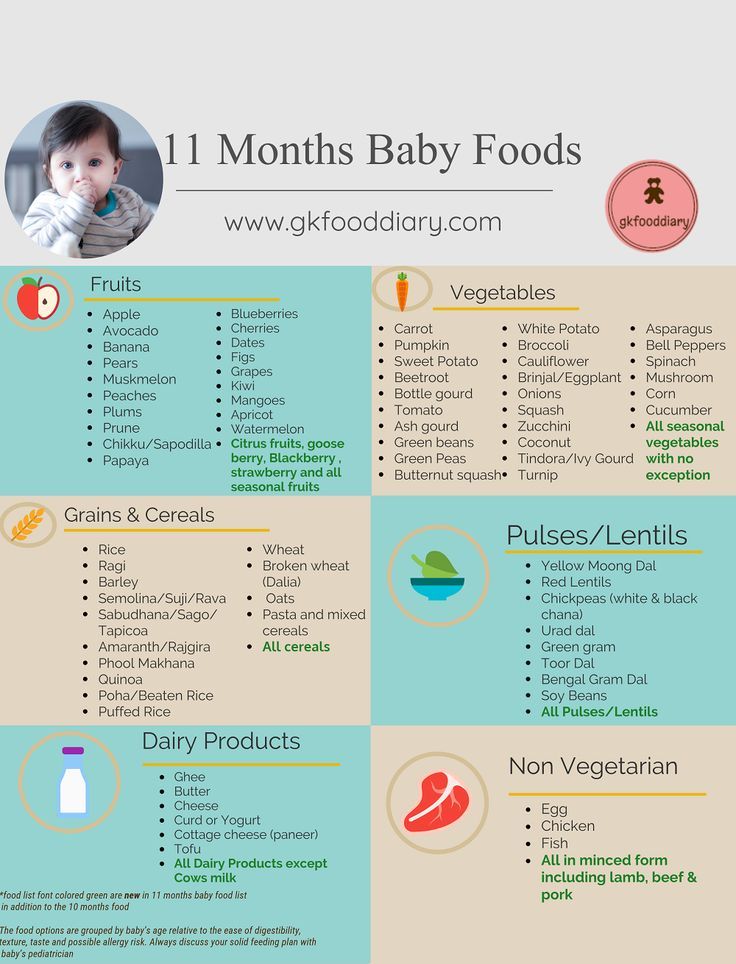 Stir occasionally.
Stir occasionally. - Once it’s nice and soft, add a dash of cinnamon for a slight sweetness.
- Before serving, add chopped bananas on top.
5. Avocado on Toast
Avocado is rich in healthy fats and can meet your child’s requirements for healthy fats. It tastes delicious too. Check the recipe below –
Ingredients
- 1 large ripe avocado
- 1 banana (if required)
- 4 slices of bread (whole wheat)
- Some cheese (optional)
- Salt and pepper as per taste
Method
- Cut the avocado in half and remove the pit. Then scoop out the flesh and mash it in a bowl until its creamy.
- Sprinkle some salt and pepper for taste.
- Toast the bread slices and spread the mashed avocado on them.
- Season with slices of banana or shredded cheese.
Tips to Make Mealtimes Fun and Safe
We understand that getting babies to eat food served on their plate is not an easy job.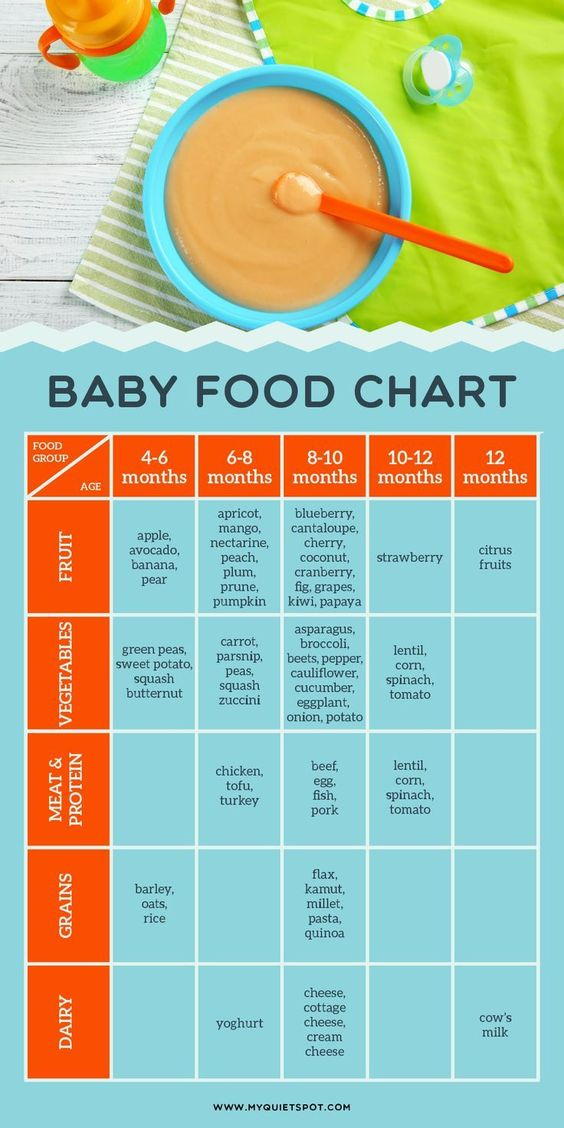 The minute you don’t pay attention to your baby, the food on his plate will be on the walls and floor of the room and he will have a triumphant smile on his face. We know, this might stress you out, but calm down! We have a few tips that will make mealtimes fun for your little one. Have a look at them. We are also sharing some tips that will come in handy when you feed your little one.
The minute you don’t pay attention to your baby, the food on his plate will be on the walls and floor of the room and he will have a triumphant smile on his face. We know, this might stress you out, but calm down! We have a few tips that will make mealtimes fun for your little one. Have a look at them. We are also sharing some tips that will come in handy when you feed your little one.
- Getting babies and toddlers to eat food is not easy once they develop a taste. Most likely, your child will say ‘no’ to certain foods and throw tantrums when you try to get him to eat them. But you don’t have to force him. To get him to eat broccoli, try some clever ways. Make the food colourful so that your child can’t deny it. For example, instead of serving him boiled broccoli alone, you can give him two small broccoli florets, two thin slices of boiled carrot, and a few slices of cucumber. This way the food on his plate will look colourful and he will most likely be tempted to eat it.
- Refrain from setting a ‘clean plate’ rule for your toddler.
 Serve him two-three options and let him choose what he wants to eat. The more you set rules, the more he will defy them. So, take it easy with your kiddo.
Serve him two-three options and let him choose what he wants to eat. The more you set rules, the more he will defy them. So, take it easy with your kiddo. - Try the reward system – it always works! By rewards, we don’t mean that you get him a toy car every time he finishes the food served on his plate. What we are trying to say is that you praise him whenever he does something good. For example, if he finishes the food on his plate, praise him a little. You can say, “Good job!” A little appreciation will go a long way in developing healthy eating habits in him.
- If you want your child to eat a particular vegetable, first, you eat it. Be a good role model; your child observes you and learns from you so in order to get him to eat something, show him how it’s done. Let your child learn the habit of healthy eating from you.
- To keep your little one interested in his meals, we suggest that you offer him a variety. Your baby may get bored of eating the same food daily, so introduce new foods.
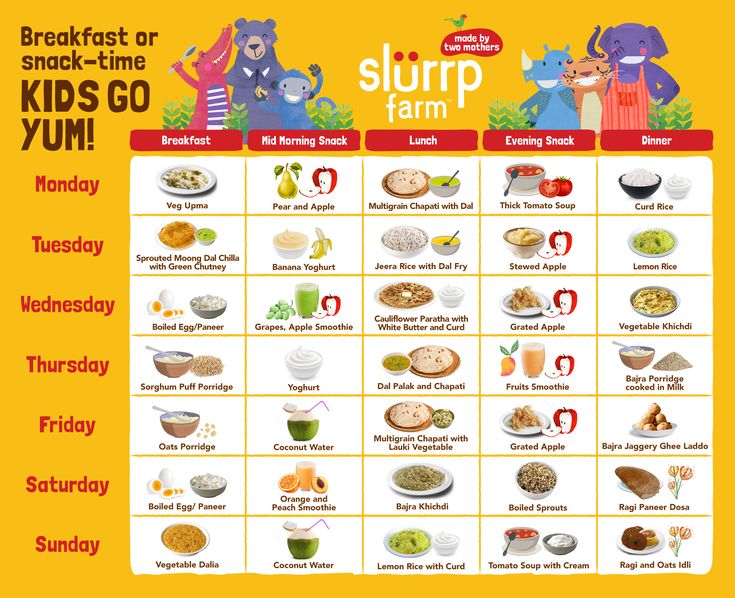 You can introduce different foods to your child to expand his palate and to make mealtimes interesting for him.
You can introduce different foods to your child to expand his palate and to make mealtimes interesting for him. - Introducing new foods surely will keep your child interested. Having said that, we suggest that you introduce new foods in his diet gradually. If you want to make him try a particular food, give a small portion of it. And after having introduced that food, wait for at least three days before you introduce another food. This time period will help him develop a taste for that food and will help you identify any signs of allergy in him.
- When your little one is having food, monitor him closely to ensure that he doesn’t choke on his food. If you notice that he is choking on his food or is coughing slightly, help him spit the food.
- Serve small pieces of food so that your child can chew them easily. And let your take his time at mealtimes – let him child savour his meals.
- If you have a hectic schedule, consider meal planning in advance for your child.
 Decide what you will cook for him a day in advance or on weekends. You can also cut certain veggies and freeze them so that you can use them throughout the week.
Decide what you will cook for him a day in advance or on weekends. You can also cut certain veggies and freeze them so that you can use them throughout the week. - You can also start giving him small harmless cutlery such as spoons to help him learn how to eat with a spoon.
- Lastly, consult your paediatrician before introducing fish or heavy meat.
- For your baby’s healthy development, make sure he eats healthy food, which is rich in protein, vitamins, carbohydrates and healthy fats.
There you go – you have everything you need to make mealtimes fun for your kiddo. You know what foods to include in your child’s diet and how to include them, so go on and offer him these foods. Make the foods suggested above for your kiddo and get him to eat nutritious foods. Trust us, your little one will be just fine!
Also Read: Food Ideas for 1-Year-Old Baby
Meal Ideas for 17-20 Months Baby
Patience with children at meal times is not easy.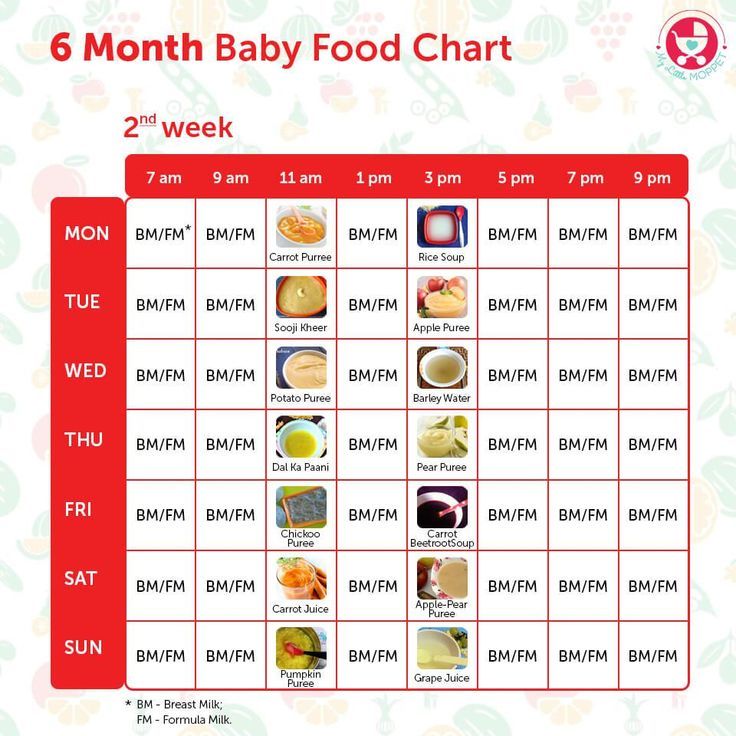 If you have a child, you know that taking care of them requires a lot of work. From making sure you're giving him the best nutrition to making sure he eats on time, as a parent, you need to be sure of a lot. There is one task that is most important, and that is choosing meals for your child. You will need to include nutritious foods in his diet early on for his healthy growth and development, as well as for developing healthy eating habits he has. If you want to know what foods you should include in your child's diet, read this article!
If you have a child, you know that taking care of them requires a lot of work. From making sure you're giving him the best nutrition to making sure he eats on time, as a parent, you need to be sure of a lot. There is one task that is most important, and that is choosing meals for your child. You will need to include nutritious foods in his diet early on for his healthy growth and development, as well as for developing healthy eating habits he has. If you want to know what foods you should include in your child's diet, read this article!
Best Foods for 17-20 Months Baby
If your baby is 17 to 20 months old, he must be growing fast. He will need proper nutrition to continue on his growth path. A balanced diet rich in proteins, vitamins, carbohydrates and minerals is important for him. If you want to know what foods you should include in your child's diet, read on!
1. Cereals
Cereals are very healthy and can be included in your child's diet. You can add various grains to his diet, such as rice, millet, barley, etc. Rice is the least allergenic grain, so it is recommended as one of the first complementary foods for children. Millet is a rich source of B vitamins, magnesium, and iron, while barley can provide your snacks with vitamin A, folic acid, and protein. You can also include quinoa in his diet as it is rich in iron, calcium, fiber and protein. However, before including these pills, check with your pediatrician first.
You can add various grains to his diet, such as rice, millet, barley, etc. Rice is the least allergenic grain, so it is recommended as one of the first complementary foods for children. Millet is a rich source of B vitamins, magnesium, and iron, while barley can provide your snacks with vitamin A, folic acid, and protein. You can also include quinoa in his diet as it is rich in iron, calcium, fiber and protein. However, before including these pills, check with your pediatrician first.
2. Vegetables
Now that your baby is a little older, you can introduce him to vegetables. vegetables like pumpkin وcarrot This is a great source of vitamin A, so include it in your diet. Apart from this, you can also give him boiled peas, beans and cucumbers.
3. Fruit.
You can include citrus fruits such as oranges or mon Sweet and other fruits such as apples and bananas AND berries and pears. How about giving him an avocado? Avocados are an excellent source of healthy fats and should be included in a growing child's diet.
4. Nuts
Dried fruits and nuts This can help your child gain a healthy weight. You can start by giving your child small pieces of almonds and walnuts (finely chopped) either with meals or as a snack. These nuts should be finely chopped to make it easy for your baby. You can also crush nuts and add them to his glass of milk.
5. Meat
Small portions of fried chicken or any other poultry are good for a child of this age. However, you must ensure that the meat you include in his diet is fresh, organic, and perfectly cooked.
6. Fish
At this age, you can introduce your child to different types of fish, with the exception of some fish like swordfish. Make sure the fish is well cooked. Also, don't give him crustaceans and shellfish, as they can cause an allergic reaction.
7. Milk
If your child is over 12 months old, you should include a cup of milk in his daily diet. If your child is lactose intolerant, ask your pediatrician about including milk in his diet.
8. Other dairy products
can also be given cheese and butter Industrial, butter, cottage cheese and milk yogurt As a snack for a small child. You can also include it in your meals. Dairy products are a rich source of calcium and protein and will keep your baby full.
9 eggs
egg A variety of food and can be included in the diet of a child at this age. Boiled eggs and scrambled eggs, breakfast option. Eggs are high in protein and cholesterol and are good for overall health. So make it part of your child's diet.
Baby Meal Planning/Planning Template 17-20 Months
Preparing meals for your baby is easy if you have a meal plan. Here is a sample nutrition chart for children aged 17 to 20 months. You can use this meal plan as a guide and make it your own. Check out the plan below -
| day | Breakfast | Snack | Evening snack | Dinner | |
| Monday | 1 ragi dosa + small glass of milk | 2/3 apple pieces | 1 cup lemon rice + sambar | Porridge with honey and cinnamon | ½ cup tomato soup + 1/2 cup whole grain pasta |
| Tuesday | 1 cup oatmeal with sliced banana | ½ cup watermelon | Half a cup of rice + half a grain + 1-2 slices of carrots and cucumbers | Half a glass of fruit yoghurt | 1 roti + 1/4 cup palak paneer |
| Wednesday | 1 small bowl of vegetables | papaya milk | 1 cup vegetable pulao + 1 green vegetable | Carrot and cucumber slices with pumpkin | 1 cup steamed vegetables |
| Thursday | 1 small bowl of flat rice + freshly squeezed orange juice | Grapes cut in half | 1 cup green vegetables + cottage cheese | Banana Strawberry Juice | 1 roti with ghee + loki ki sabzi |
| Friday | Vegetable sandwich (black bread) + watermelon juice (fresh juice) | Banana slices | 1 roti with ghee, carrots and beans | Corn flakes with milk | 1 cup red rice + black dal |
| Saturday | vermicelli | Banana juice | 1 cup yellow dal + brown rice (small portion) | 2 whole grain/cookies | ½ cup pasta |
| Yogurt | ½ cup strawberries | Mexican burritos (XNUMX small pieces) + XNUMX pieces of any seasonal fruit | A cup of milk + 1 small piece of barbecue | 1 metaparata + tomato sauce |
Homemade meal recipes for baby 17-20 months
Your child is about XNUMX years old, you can offer everything he or she wants to eat. So don't be afraid to experiment. Your child will love all kinds of dishes prepared with spices. Here are some easy and delicious recipes you can try.
So don't be afraid to experiment. Your child will love all kinds of dishes prepared with spices. Here are some easy and delicious recipes you can try.
1. Pumpkin Jam
Pumpkins are full of vitamin A and can be used for pumpkin jam, which your child can eat with apples or cucumbers. Here is how you can achieve it.
ingredients
- 1 canned pumpkin
- ½ teaspoon salt to taste
- ½ teaspoon pepper
- pinch of lemon (optional)
Path
- Combine all ingredients in a bowl and mix well.
- Served with apple or cucumber slices.
2. Risotto Primavera
- This Italian dish is rich in vegetables and proteins and is a good lunch option.
ingredients
- 1 onion (finely chopped)
- 1 small leek (well washed and finely chopped)
- 2 teaspoons olive oil
- A small portion of rice to eat
- Vegetable or chicken broth (optional)
- Half cup frozen peas
- 1 small carrot (finely chopped)
- 1 tablespoon butter
- 1 tablespoon lemon juice
- Piece of parmesan cheese
Path
- Put the butter in a pan and fry the shallots and onions for about 5-6 minutes.
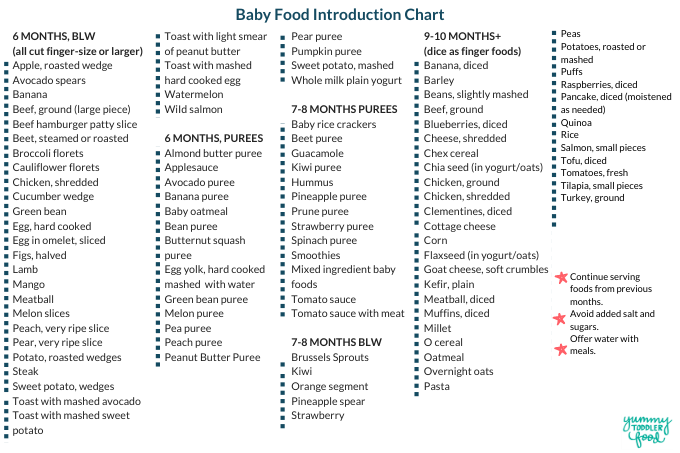
- Add the rice, stir and let it cook until the rice is translucent.
- Add a pot full of broth and stir frequently until it is completely absorbed and cooked through.
- Add more mixture, stir and cook the rice gently until soft.
- When the rice is ready, grate some parmesan cheese and garnish on top before serving.
3. Vegetable salad
Vegetables with lemon dressing are a great option for a quick snack.
ingredients
- 1 cup cooked quinoa
- A quarter cup of olive oil
- 1/3 cup vinegar
- 1/2 onion (chopped)
- 1 red bell pepper (chopped)
- 1 tomato (cut)
- 8 black olives (canned)
- 1 cup cilantro (finely chopped)
- 1/2 teaspoons salt
- Half teaspoon black pepper (ground)
- 1 cup shredded feta cheese
- 1 lemon (medium)
Path
- Take the cooked quinoa and put it in a bowl.
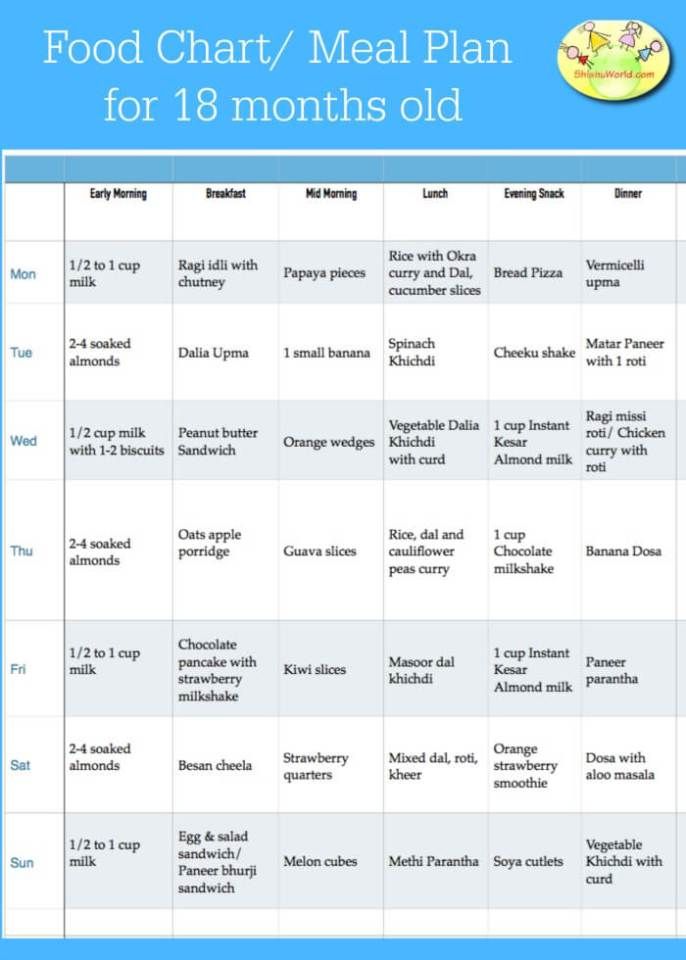
- Pour some olive oil into a frying pan and add some onions, bell peppers, tomatoes and coriander.
- Add quinoa and herbs to a bowl and top with crumbled feta.
- Drizzle with some lemon juice and serve.
4. Banana Oatmeal
This breakfast recipe is rich in fiber and vitamins. Eating oats will keep your baby full for a long time.
Ingredients needed
- 1 small cup of oatmeal
- 1 small cup almond milk or water
- 1 banana (sliced)
- 1 teaspoon cinnamon
Path
- Slowly cook the oats with a little almond milk in a pan. Periodic fuss.
- When soft and pleasant, add a pinch of cinnamon for a slight sweetness.
- Top with sliced bananas before serving.
We understand that getting kids to eat what's on their plate is not easy. The moment you stop caring for your child, food will be on his plate on the walls and floor of the room, and a wonderful smile will appear on his face. We know this can stress you out, but take it easy! We've got some tips for making eating fun for your child. Take a look at them. We will also share some tips that we think will come in handy when feeding your little one.
We know this can stress you out, but take it easy! We've got some tips for making eating fun for your child. Take a look at them. We will also share some tips that we think will come in handy when feeding your little one.
- Getting young children to eat food is not easy once they develop their own taste. Your child will most likely say no to certain foods and throw a temper tantrum when you try to get him to eat those foods. But don't force it! To get him to eat broccoli, try some tricky tricks. Color the food so your child can't refuse it. For example, instead of serving it with just boiled cauliflower, you can add two small cauliflower florets, two small boiled carrot slices, and a few cucumber slices to it. Thus, the food on his plate will appear bright and he may be tempted to eat it.
- Don't set a clean plate rule for your child. . He is given two or three options and let him choose what he wants to eat. The more rules you make, the more you challenge them.
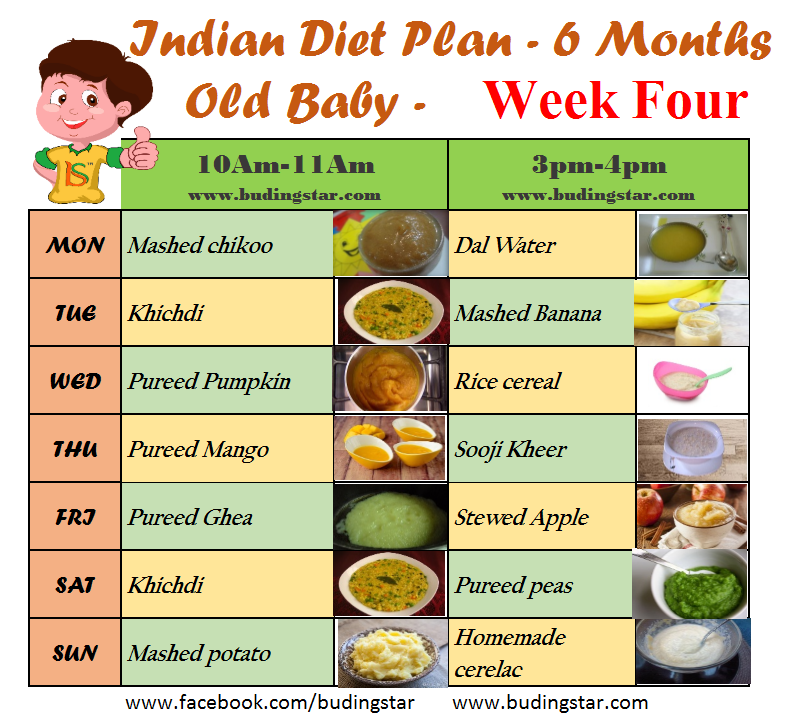 So take it easy with the baby.
So take it easy with the baby. - Try the reward system - It always works! By rewards, we don't mean that you get a toy car every time he finishes the food served on his plate. What we're trying to say is that you praise him whenever he does something well. For example, if he finishes eating on his plate, praise him a little. You can say, "Good job!" A little appreciation can go a long way in developing healthy eating habits. But if he is not ready to eat or is not full, do not force him.
- If you want your child to eat certain vegetables, you would like to eat them first. set a good example; Your child is watching and learning from you so that he can eat something, and you show him how to do it. Let your child learn healthy eating habits from you.
- In order for your baby to have an interest in food, we suggest you diversify it. Your child may get tired of eating the same food every day, so introduce new foods. You can offer your child a variety of foods to expand his taste and make eating enjoyable for him.

- Getting to know new products will definitely interest your child. Having said that, we suggest that you gradually introduce new foods into his diet. If you want him to try a certain food, give him a small portion. And after you've served that meal, wait at least three days before going for the next meal. This period of time will help him develop a taste for the food and help you spot any signs of an allergy.
- When your child is eating little, keep a close eye on him to make sure he doesn't choke on his food. If you notice him choking on his food or coughing a little, don't panic. Help your child spit out food.
- Offer him small pieces of food so that your child can easily chew them. And don't rush to eat. Let your child enjoy the food.
- If you have a busy schedule, consider planning meals for your child. Decide what you will cook for him the day before or on the weekend. You can also chop some vegetables and freeze them to use within a week.
- You can also start giving him small harmless utensils such as spoons to help him learn to eat with a spoon.
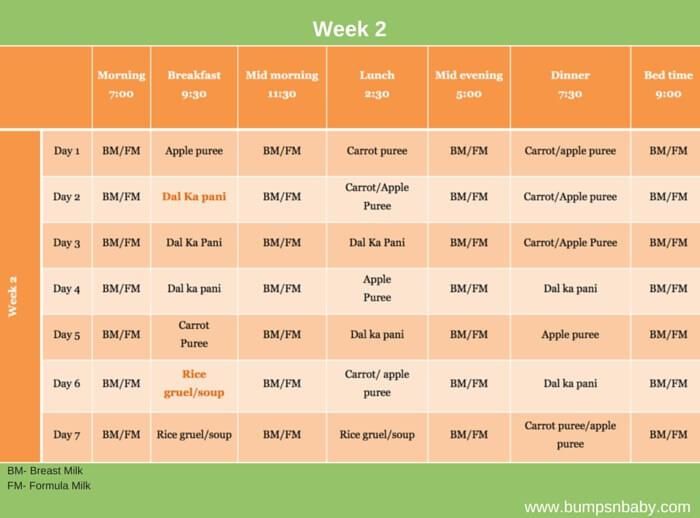
- Finally, consult your pediatrician before introducing fish or heavy meats.
For your child's healthy development, make sure he eats healthy foods rich in protein, vitamins, carbohydrates and healthy fats.
That's all - you know what foods to include in your child's diet, you have a meal plan and, most importantly, you have tips on how to make meals interesting for him. You have everything you need to make him eat healthy food. So prepare the foods suggested above for your child and make friends with him. Make him eat nutritious food and he'll be fine!
7 month baby menu
0-6 months
Article
5/5 1 reviews
What should be the menu of a child at 7 months? What foods and in what quantity can be introduced into the diet at this age? When and at what intervals to give the baby to eat? We will help develop an approximate menu for a 7-month-old baby and answer the most exciting questions regarding the nutrition of a baby up to a year old.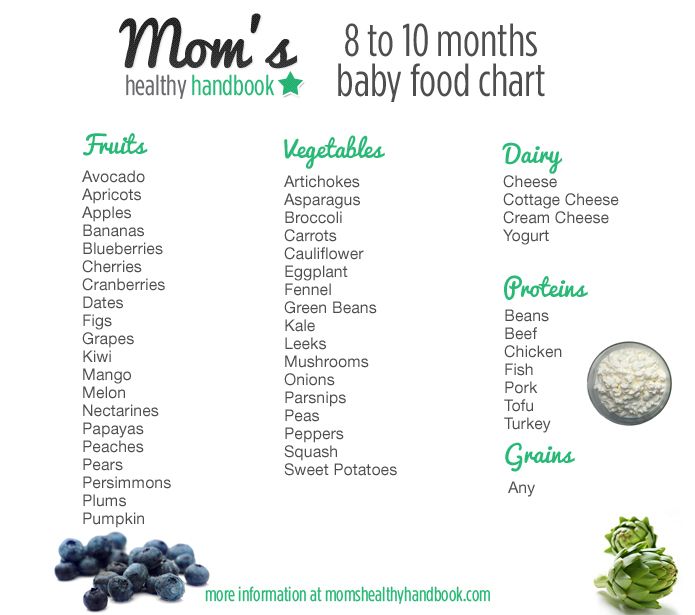
7 min. for reading Feb. 17, 2022
Contents
- Diet: when and how much should a baby eat at 7 months
- Baby menu at 7 months: introducing new products
- Consistency of dishes
- Meal schedule and approximate menu for each day
- Sample diet for a 7 month old baby allergic to cow's milk proteins: Table
- FAQ
- Breastfeed every 3-4 hours while breastfeeding.
- If you give your baby expressed breast milk, he needs approximately 710 grams per day. With 5-6 meals a day, this is about 120 to 200 grams of milk per meal.
- If the baby is formula-fed (FW), he needs 170 to 230 grams of formula up to 4 times a day, provided that 2 more feedings replace complementary foods. To find out how much mixture you need, be guided by the instructions on the package, the recommendations of the pediatrician.

- From the age of 6 months, only mother's milk or adapted infant formula is not enough for a baby - he needs a variety of complementary foods. Introduce no more than one new product per day into the child’s menu at 7 months and consult a pediatrician first. After getting acquainted with different foods, up to three complementary foods can be given daily: this can be one or two tablespoons or 115-170 grams (8-12 tablespoons), depending on the baby and the specific product.
Important
Calculation of servings and the number of feedings depends on the individual characteristics of the development and needs of the child. Therefore, first of all, be guided by the recommendations of your pediatrician and the needs of the baby.
Baby menu at 7 months: introducing new products
The basis of the diet is still breast milk or infant formula. To diversify the menu, children's adapted food will help: fruit and vegetable purees, milk and dairy-free cereals, juices, as well as some products from the "adult table".
Cereals
At 7 months, dairy-free and milk porridges, along with breast milk, are the basis of a child's nutrition. To start complementary foods, choose gluten-free liquid one-component cereals with a high iron content: rice, buckwheat, oatmeal. A little later - corn and semolina. Start complementary foods with half or a whole teaspoon, gradually increasing the serving to 150 grams.
Important
Dairy-free porridge is diluted with breast milk or milk formula, milk - with purified boiled water.
Find out more: Gerber® Baby Cereals: product range
Vegetable and fruit purees
Vegetable and fruit purees will diversify the diet and introduce new tastes to the baby. According to WHO recommendations, the best product to start with is a one-component vegetable puree made from zucchini, broccoli, cauliflower or potatoes. These vegetables are less allergenic than other foods. If the child does not have allergies, pumpkin, carrot, pea and tomato puree can be given a little later.
If the child does not have allergies, pumpkin, carrot, pea and tomato puree can be given a little later.
Find out more: Gerber® Vegetable Purees
After introducing vegetable purees into your diet, it's time for your baby to get to know sweet and healthy fruit purees. Like vegetable, fruit complementary foods are also recommended to start with one-component low-allergenic foods. Apple, pear or banana puree is best for this. Start with half or a whole teaspoon and gradually increase the serving to 100-150 grams.
Find out more: Gerber® fruit purees
Meat
Meat is a developmentally necessary product, rich in iron and protein, which is well absorbed in the body. Start with homogenized options. The product must contain only one type of meat (diet turkey, rabbit, chicken, veal) and no additional components. If the crumbs have a tendency to food allergies, choose meat very carefully, it is better to consult a doctor in advance. Pay attention to the composition of baby food and its age-appropriate baby. First, let the baby try half a teaspoon. If no adverse reactions occur, gradually increase the meat rate to 60 grams.
Pay attention to the composition of baby food and its age-appropriate baby. First, let the baby try half a teaspoon. If no adverse reactions occur, gradually increase the meat rate to 60 grams.
Find out more: Gerber® Meat Purees
Juices
Fruit juice is great for snacking and menu variety. Young children tolerate clarified apple and pear juice better, so they should be introduced first. Give the baby adapted baby juices: they do not contain sugar or other additives undesirable for the child. Ordinary store-bought juices can only be drunk by children over three years old.
0057
Advice
Introduce your baby to juices after introducing cereals and vegetable purees. Often the child gets used to sweet juices and then does not eat foods with a less bright taste.
Egg yolk
In addition to cereals and mashed potatoes, boiled egg yolk is introduced at the age of 7 months, as it is an excellent source of omega-fats, selenium, phosphorus and vitamins.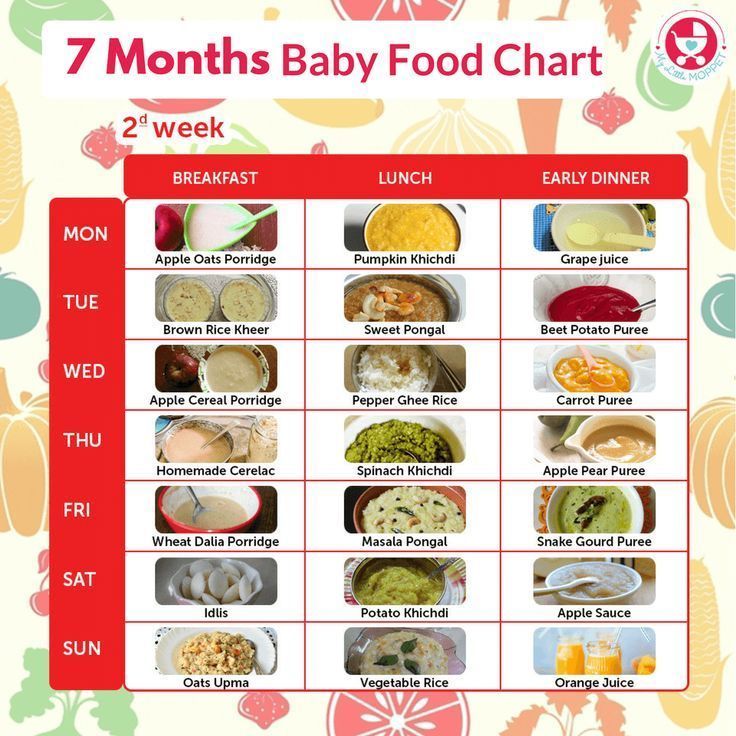 Please note that you need to give the egg not the whole, but only the yolk. But, like any other product that you give to try for the first time, it should be introduced carefully and little by little to make sure that the baby does not have an allergy. Do not combine with other food! Only when you "test" the yolk, it is allowed to add it to cereals and vegetable purees.
Please note that you need to give the egg not the whole, but only the yolk. But, like any other product that you give to try for the first time, it should be introduced carefully and little by little to make sure that the baby does not have an allergy. Do not combine with other food! Only when you "test" the yolk, it is allowed to add it to cereals and vegetable purees.
Important
It is believed that allergic children can be fed quail eggs. But it is important to remember that quail eggs can also be allergic, as they also contain egg white, an allergen found in chicken eggs. Therefore, do not experiment, but seek the advice of a pediatrician.
See also: Introduction of complementary foods to children with food allergies
Baby biscuits and crackers
Some babies start teething at seven months. Therefore, you can add crackers and children's cookies to food. But do not forget that they should not be too hard so that the child does not get hurt and choke. It is also better to choose special products without added salt, sugar, synthetic leavening agents and preservatives.
It is also better to choose special products without added salt, sugar, synthetic leavening agents and preservatives.
Important
The child should eat solid food in a sitting position and strictly under adult supervision.
Consistency of dishes
The main component of the diet remains liquid and homogeneous (without lumps) - breast milk or milk formula, milk and dairy-free cereals. As the baby grows, the baby's food should change from liquid and homogeneous to thicker and puree, mashed. When the body adapts and is able to digest solid food, they begin to carefully introduce small, medium and coarsely ground foods, give children's cookies and crackers. At 7 months, some babies already have teeth, but the child cannot yet chew thoroughly and safely swallow vegetables, fruits and meat. Therefore, solid food should be given only in a grated form. It is important that the puree is not too thick, otherwise the child may accidentally choke.
Advice
If you are making puree yourself, carefully remove everything that is not rubbed and can get into the crumbs' respiratory tract: bones, fat, veins, skin, films. To make the puree easier to swallow, add some boiled water, unsalted vegetable broth, vegetable puree already familiar to the baby, or breast milk (milk mixture).
By about 7 months of age, the baby has mastered the skill of "palm grip" and can independently hold solid food in the handle. From now on, you can give your child special baby cookies or snacks. At the same time, make sure that the baby eats slowly, in a sitting position and does not choke.
Important
Your baby should be ready for more sticky or solid foods. Therefore, before changing the consistency of food for a child, consult a pediatrician.
What can be given to children at 7 months and at what time to feed? Parents can begin to form a classic division of food consumption per day.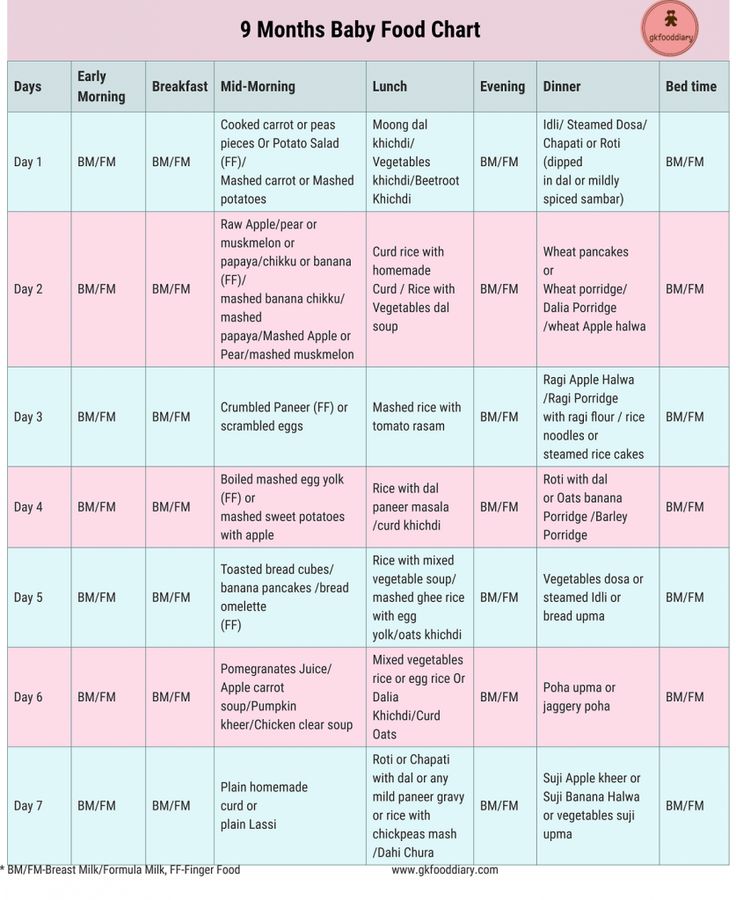 But at 7 months, the baby needs to be fed not three or four, but five times a day at intervals of four hours. The first and final feeding is mother's milk or formula. Complementary foods are not given at this time in order to prevent overeating.
But at 7 months, the baby needs to be fed not three or four, but five times a day at intervals of four hours. The first and final feeding is mother's milk or formula. Complementary foods are not given at this time in order to prevent overeating.
*Dairy-free porridge should be diluted with breast milk or infant formula given to the baby. Milk porridge is diluted with water.
Tip
Do not salt or sweeten food. It is better to introduce the baby to sugar and salt after a year.
| Feeding time | Products | Serving Size |
|---|---|---|
| I feeding 6 hours | Breast milk or medicated formula for infants with cow's milk protein intolerance | 200 ml |
| II feeding 10 hours | Nestle® Dairy-Free Rice Porridge* | 130 g |
| Vegetable oil (add to food) | about 1 tsp | |
| Gerber® Apple or Williams Pears Fruit Puree | 70 g | |
| III feeding 14 hours | Gerber® Vegetable Puree Broccoli, Cauliflower | 170 g |
| Vegetable oil (add to food) | about 1 tsp | |
| Gerber® Meat Puree Tender Vegetables with Rabbit | 30 g | |
| IV feeding 18 hours | Vegetable puree or dairy-free porridge** | 170 g |
| Vegetable oil (add to food) | about 1 tsp | |
| Gerber® Tender Turkey Meat Puree | 20 g | |
| V feeding 22 hours | Breast milk or formula for infants with cow's milk protein intolerance | 200 ml |
*Dairy-free porridge should be diluted with breast milk or formula for infants with intolerance to cow's milk proteins. **you can either alternate porridge or vegetables, or offer a mixed dish - porridge with vegetables.
**you can either alternate porridge or vegetables, or offer a mixed dish - porridge with vegetables.
Now you know what products and in what form can be introduced into the child's menu at 7 months. It is preferable if it is certified baby food that meets all age requirements and high safety standards.
See also: Do we cook ourselves or use baby food?
1. At what age should complementary foods start?
The World Health Organization (WHO) recommends introducing complementary foods to your baby's menu at 6 months of age.
2. Where to start complementary foods?
Experts advise starting complementary foods with one-component homogenized vegetable purees.
3. How much should a 7-month-old baby eat?
At 7 months, a baby needs a portion of food per day, which is equal to about ⅛ of body weight. This is 1000-1200 ml of food, excluding water, juices, children's tea.




